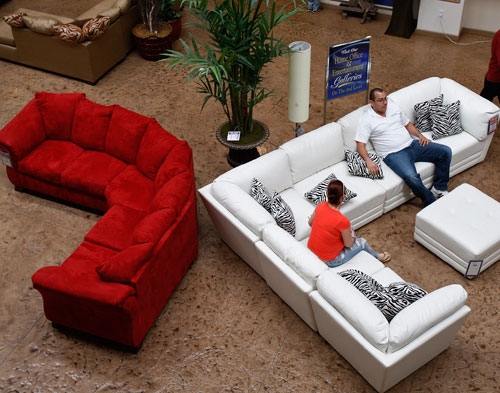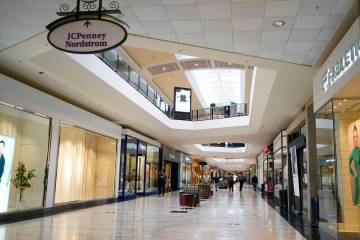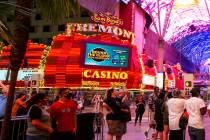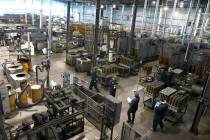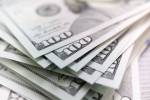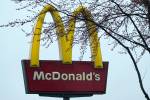Nevada’s taxable sales down 8.1 percent
New taxable-sales statistics show some long-suffering sectors of the Nevada economy enjoyed growth in January.
But those gains represent a fraction of the billions of dollars the Silver State has lost in taxable sales since the recession began. What's more, the Tuesday report, from the state Department of Taxation, reveals that hard-hit sectors such as construction, car sales and big-ticket durable goods continue to contract.
Nevada posted $2.8 billion in taxable sales statewide in January, an 8.1 percent drop from $3.1 billion in the same month a year earlier.
Taxable sales in Clark County dipped 8.3 percent, to $2.1 billion. That's down from $2.3 billion in January 2009.
The latest report had its bright spots: Consumers seemed more willing to part with discretionary income in key categories. Sales inside restaurants and bars rose $455,000, or 0.1 percent. Furniture stores posted a sales increase of $3.2 million, or 6.9 percent. Retailers of clothing and accessories improved sales by $9.4 million, or 5 percent.
But those results can't begin to erase the $2 billion toll the recession has taken on Nevada's taxable sales.
When the nation's economic downturn began in December 2007, Nevada's taxable sales came in at $4.68 billion, just a hair off the $4.69 billion peak the state posted in December 2006. Clark County reached its sales apex of $3.5 billion in December 2007.
"You really need to look at the rates on a long-term basis when you think about how long the economy has been contracting here," said Brian Gordon, a principal in local research firm Applied Analysis. "The (year-over-year January) comparables in the last two years have been some of the worst in our history in terms of the rate of decline."
Nor will Nevada return to its peak taxable-sales levels anytime soon, Gordon said. Regaining that lost ground will require a combination of increased per-capita spending and improvements in the number of local consumers and tourists, he said.
As they have for the better part of two years, construction sales took the biggest hit in January, tumbling 57.4 percent year over year. Wholesalers of durable goods saw sales plummet 24.6 percent. Auto dealers posted a 4.6 percent dip in sales.
Restaurants and bars, clothing stores and furniture retailers weren't the only merchants seeing sales boosts. Accommodations such as hotels and motels saw solid sales increases, as did general-merchandise retailers, such as department stores, and the combined category of performing arts and spectator sports.
Though increases in some sales categories are welcome, the upticks are only a month or two old, so it's difficult to call a near-term end to the broader sales slide, Gordon added.
"At some point, consumers are going to return to some normalized level of spending," Gordon said. "These data would suggest that, in selected areas like eating out, consumers are starting to report some consistency in their spending behavior year over year, while other areas continue to struggle. But one month does not make a trend."
Staffan Cederquist, owner of By Design Contemporary Furniture on West Flamingo Road, said he's not sure his industry can sustain its January sales boost.
By Design experienced a noticeable year-over-year increase in sales in the month, Cederquist said. He credited the improved business to an active home-sales market, as consumers snap up thousands of affordable, bank-owned homes and half-priced Strip condominiums.
But shoppers still seem cautious, spending considerably less at By Design than they dropped during better times. Where shoppers might have bought a leather sectional for $5,000 to $7,000 five years ago, they don't typically go over $2,200 these days, Cederquist said.
His store also usually sees a dip in sales from late March through June, he said.
Still, Cederquist said furniture's sales' "freefall" -- at its worst last summer, the sector saw 30 percent sales drops -- has likely ended.
"It's kind of like sliding down an icy hill, and you're saying, 'Where is this going to end?' Now, we're at the bottom of the hill, and it's still slippery and icy, but at least we have our feet on the ground," he said.
Gordon said retailers can expect taxable sales to "bounce around" between growth and contraction before they show steady year-over-year gains.
Revenue from taxable sales helps fund public services, including prisons and schools.
Gross revenue collections from sales and use taxes were $220.1 million in January. That's a 3.3 percent decline when compared with the same month a year ago, and a 9.7 percent dip in the first seven months of fiscal 2010, which began July 1.
Gross revenue collections came in at $352 million in December 2007, as the recession began.
State officials estimate that the General Fund portion of sales and use taxes is $8 million above forecasts of the Economic Forum, a nonpartisan group that helps craft revenue projections for state budgeting.
Contact reporter Jennifer Robison at jrobison@reviewjournal.com or 702-380-4512.
• -57.4% Construction industry
• -4.6% Auto and parts dealers
• 0.2% General merchandise
• -4.8% Food and beverage stores
• 14.0% Accommodations
• 0.1% Food and drinking places
• 6.9% Furniture and furnishings
• 5.0% Clothing and accessories



